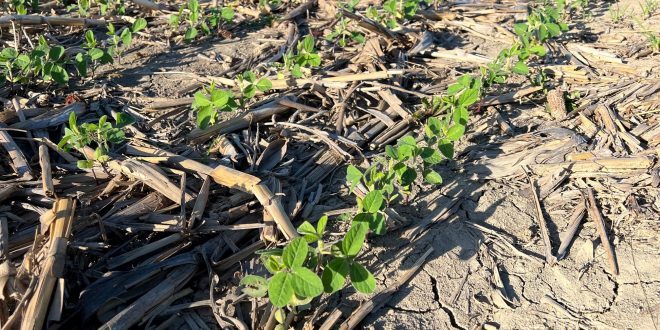No-Till Farmer recently put together a report: How No-Till Improves Land Values. This report put an economic value on conservation farming practices that improve the environment but also preserve our soil. While farmers own the land and have the right to farm it how they choose, long-term society has an interest in preserving the land for future generations. Here are some results of research on the benefits of no-till to society.
An organization called Rural Investment for Protecting our Environment (RIPE) came up with $112 per acre as the value associated with no-till farming. This included $7 for increased carbon sequestration, $16 for improved air quality and human health, $25 for better water quality and $44 for improved soil nutrient management — all on a per acre basis. No-Till Farmer has been documenting farmer benefits for 25 years with farmers indicating they saved $25-$90 per acre in reduced production costs. A conservative figure is $30 per acre on average for reduced fuel, equipment, labor and nutrient (fertilizer) costs and higher water use efficiency, especially for irrigated farmland. Altogether, no-till farmers gain at least $142 per acre in economic benefits. This value represents $16 billion dollars of value to the 110 million acres in the U.S. that are using no-till farming practices.
RIPE recently received an $80 million dollar grant from the USDA farm programs to develop Climate Smart Programs. They are doing a pilot project in four states: Arkansas, Minnesota, North Dakota and Virginia. RIPE pays famers up to $100 per acre to adapt conservation practices like no-till, cover crops and strip-till based on the stewardship value to society. They will compare these conservation practices to farmers who don't use conservation practices. RIPE will document changes in carbon sequestration, reduction in greenhouse gasses, increases in soil health, improved water quality and other environmental benefits (reduced flooding, reduced water usage, wildlife benefits, etc.).
RIPE says that their recommended conservation practices would guarantee a fair return to farmers for their voluntary practices that deliver public benefits for clean water, land preservation, healthy soil, climate mitigation and other environmental services. This pilot program may be an indication of how USDA farm programs may be handled in the future, based on public service or benefits to society.
North Carolina University also did an economic study comparing the value of no-till on land values. They used government satellite data, which is generated every 5 years to determine how the land is farmed and compared that to actual current land sales. Their results showed that for every 1% no-till in an Iowa county, land values increased $15 per acre. In other states, which covered a much larger area with more diversity of land productivity, the value was about $8 per acre.
The researcher’s theory is that the more productive the land, the higher the benefits to no-tilling. Also, Iowa has much better information while the other areas had less information, and it covered a much greater diversity of soil types and soil productivity, so the results were about half as great. The value of cover crops was also studied but the difference was not significant, probably because cover crops are only used on about 3.9% of USA cropland.
Is it possible that if an Iowa county or a county outside Iowa increased no-till to 10% to 50%, that could increase land values in Iowa by $150/A to $750/A or about $80 to $400 outside of Iowa? The answer is probably a big YES! Consider what happens when land is put into the government Conservation Reserve Program (CRP) for 10-20 years. That land is usually the least productive, highly erodible land, and the least profitable to farm.
After 10-20 years of CRP rest in long-term grass, soil health improves, and the soil begins to heal. Many farmers seek out this CRP land because it becomes highly productive and highly profitable once the soil has been restored. As an example, for the same inputs, a soybean farmer may go from 30-bushel soybeans to 70-80 bushels soybeans (40 bu * $13/bu, 50 bu * $13/bu) or $520-$650 in increased value. For a corn farmer, from 120 bushels corn on highly eroded sloping soil to 180-200 bushels corn, a gain of 60-80 bushels ($6/bushel) or $480-$640 per acre.
Current Ohio 2022 government conservation practices payments for a new farmer adapting no-till ($16.22/A), conservation crop rotation ($10.39/A), basic nutrient management plan ($6.98/A), precision ag pest management ($46.43/A), and cover crops ($51.05) total $131.07/A (No-Till Farmer, 2022). Conservation practices do pay, but it’s a long-term investment similar to investing in tile. It takes some time and patience to recover your investment.
Related Content
How No-Till Improves Your Land Value
New Report Offers Ways to Bring Your Landlord Over to No-Till






